Stańczyk
Stańczyk
Couldn't load pickup availability
Share
Stańczyk by Jan Matejko: The Jester Who Saw It All
Most people see Stańczyk (1862) as just a painting of a court jester lost in thought. But those who really see it know this isn’t just any fool in a festive outfit—it’s a masterstroke of political commentary wrapped in velvet and sorrow. Matejko didn’t just paint a jester; he captured the very soul of a nation teetering on the edge.
The brilliance of this piece isn’t in its rich color palette or impeccable technique—though both are undeniable—but in the weight of what isn’t being said. Stańczyk, Poland’s most famous historical jester, sits slumped in solitude, while the distant glow of a royal ball mocks him in the background. Unlike the revelers, he’s read the letter on the table. He knows that Poland has just suffered a devastating loss—the fall of Smolensk in 1514. The court dances on, oblivious. But he? He knows. And that knowledge crushes him.
Look closer, and the details unravel layers of meaning. The contrast between the lavish red of Stańczyk’s costume and the dim, oppressive room isolates him further. His furrowed brow, downturned mouth, and clenched hands betray an awareness deeper than any monarch’s. This isn’t the face of a clown; it’s the face of a man burdened with truth, of someone who understands that being the only clear-eyed soul in the room is its own kind of curse.
Matejko, a master of historical narratives, used Stańczyk as a stand-in for Poland itself—always aware, always struggling against fate. And for those who grasp the gravity of the moment he captured, this painting is more than just a work of art. It’s a quiet, piercing revelation.
If you know, you know. And now, that quiet understanding can be part of your space.

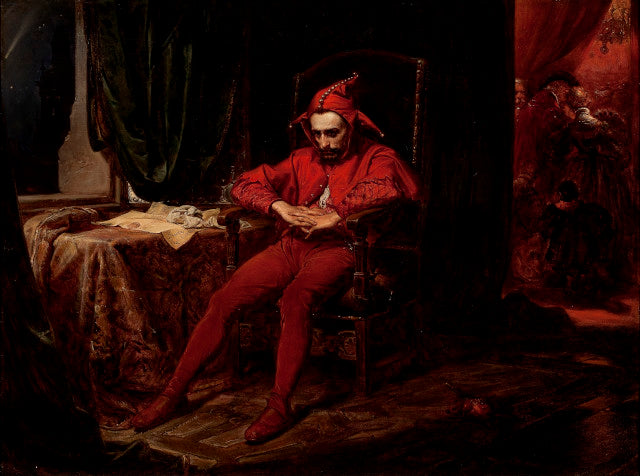





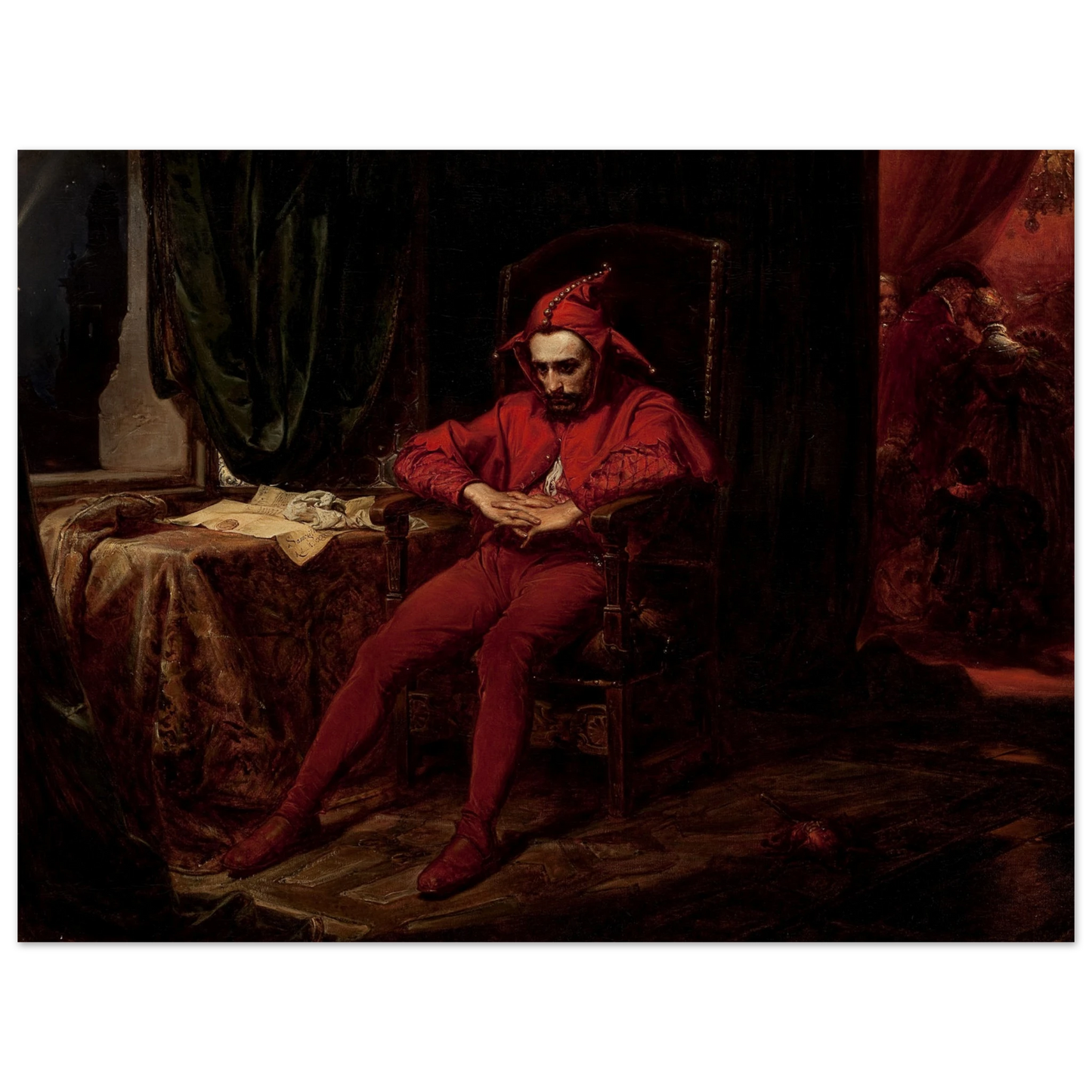
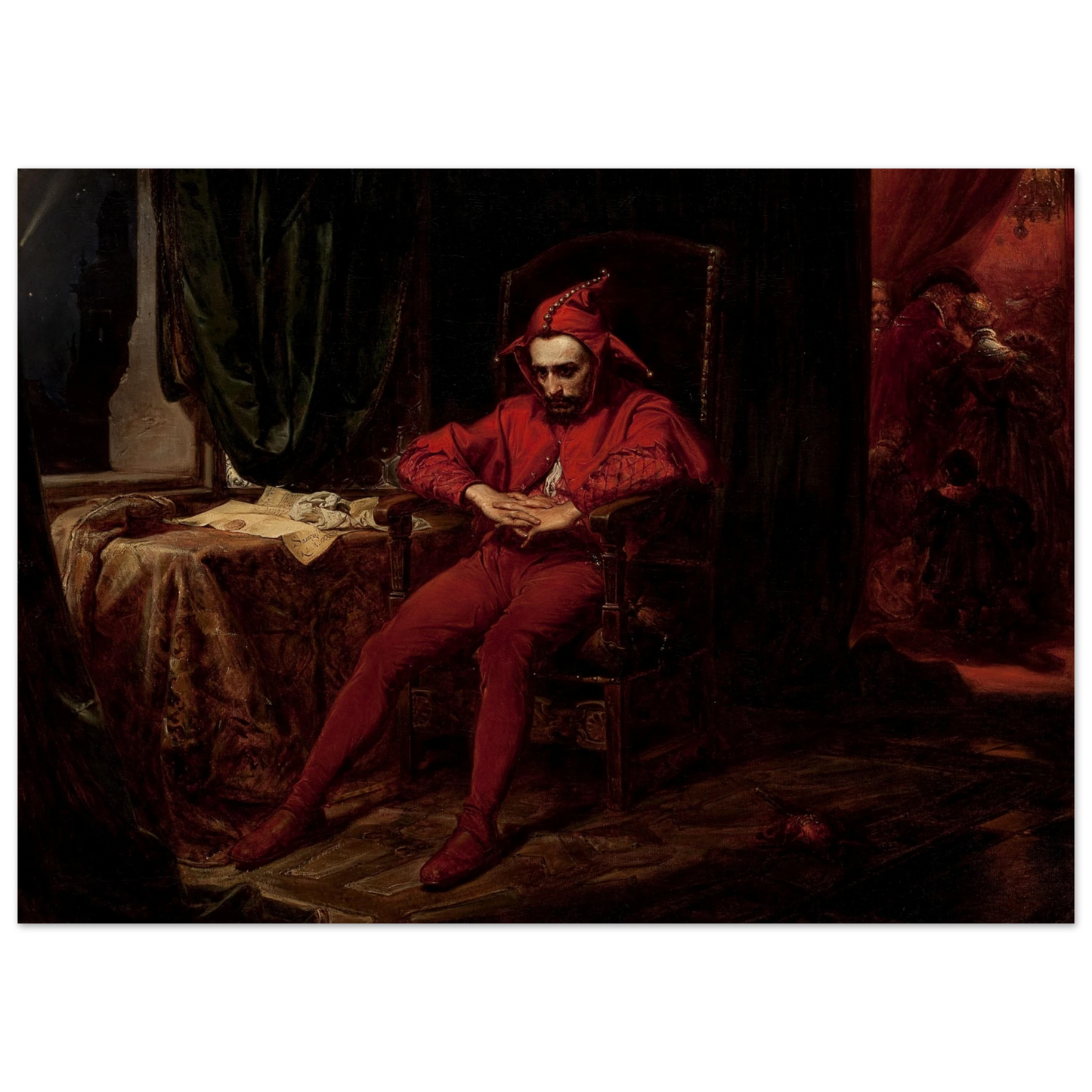

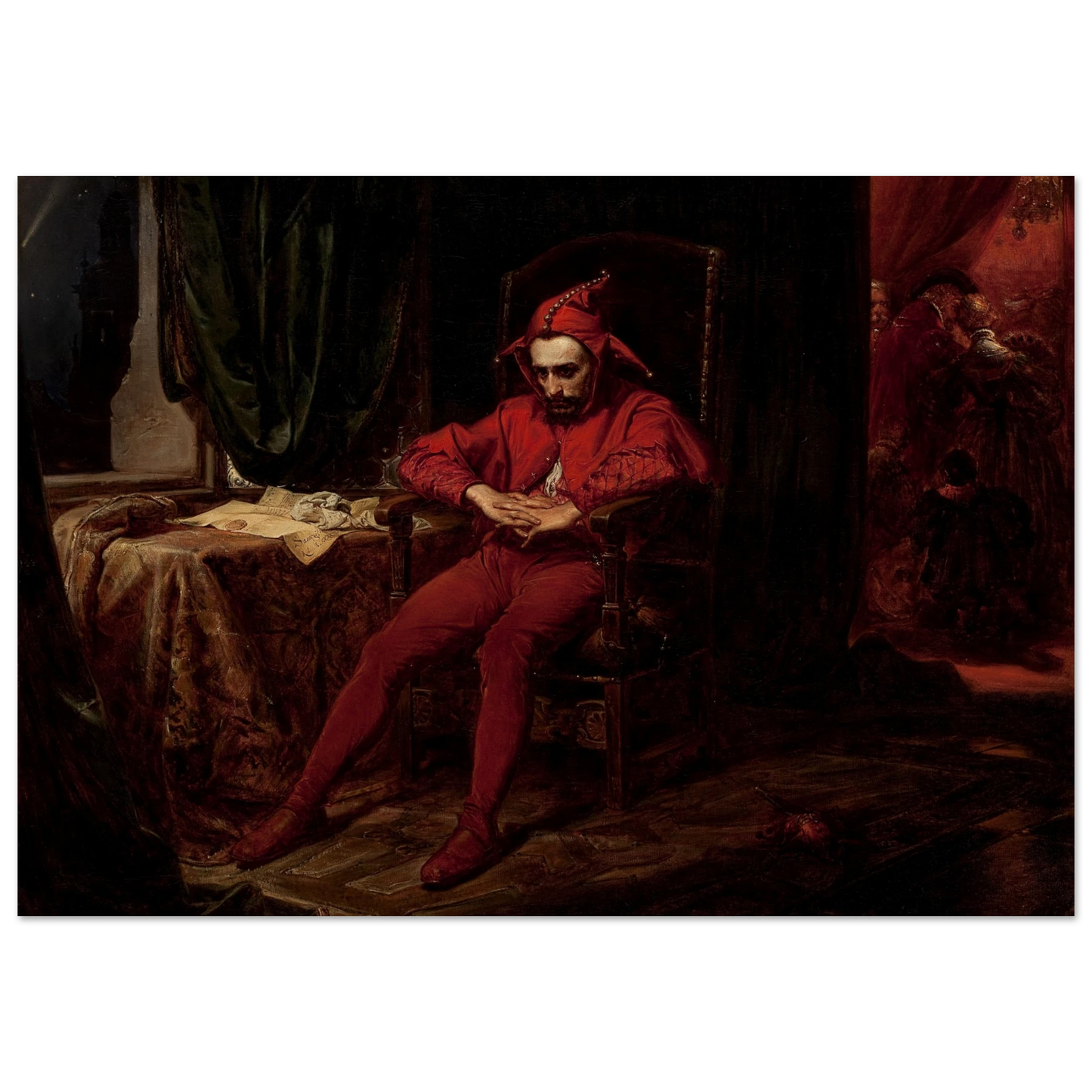


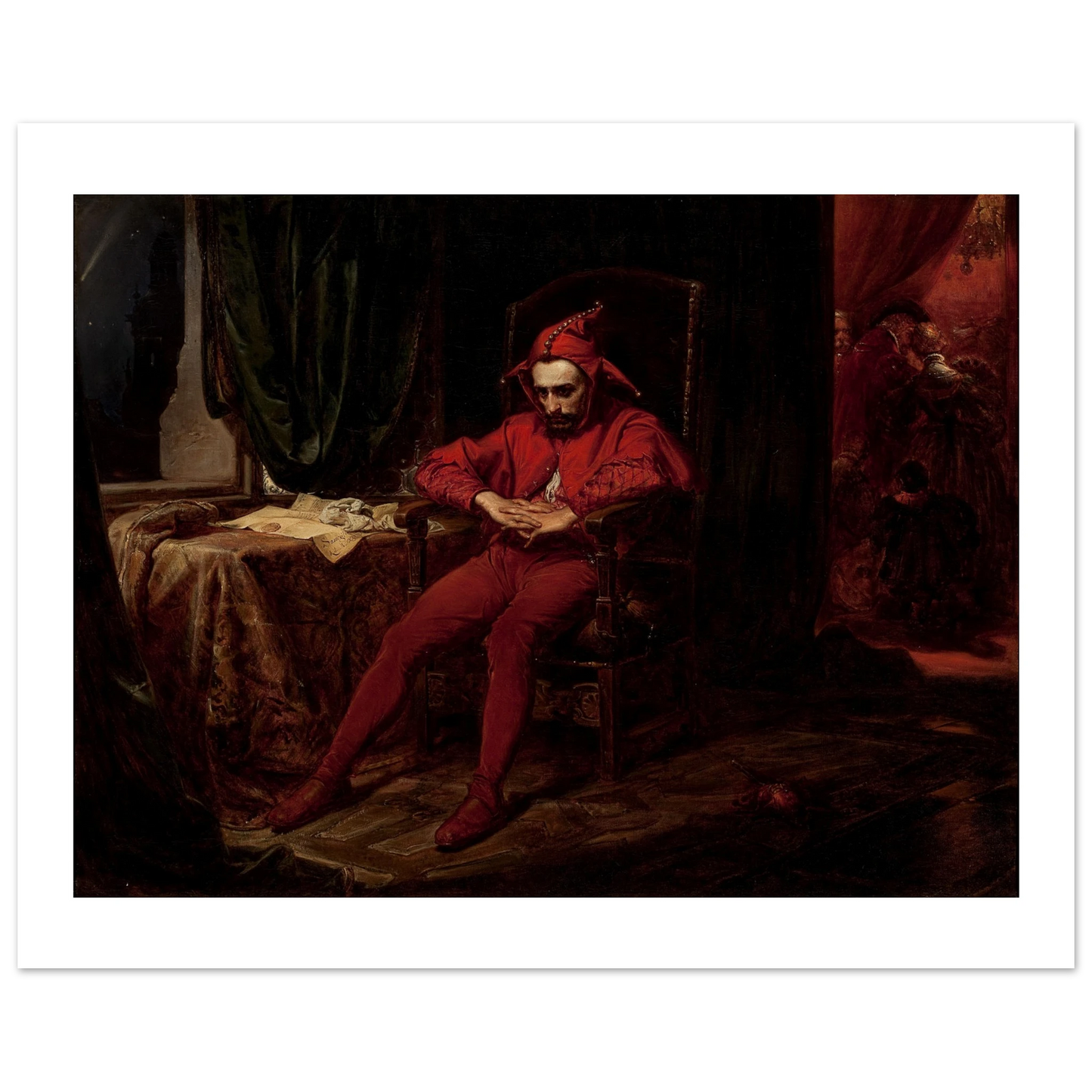
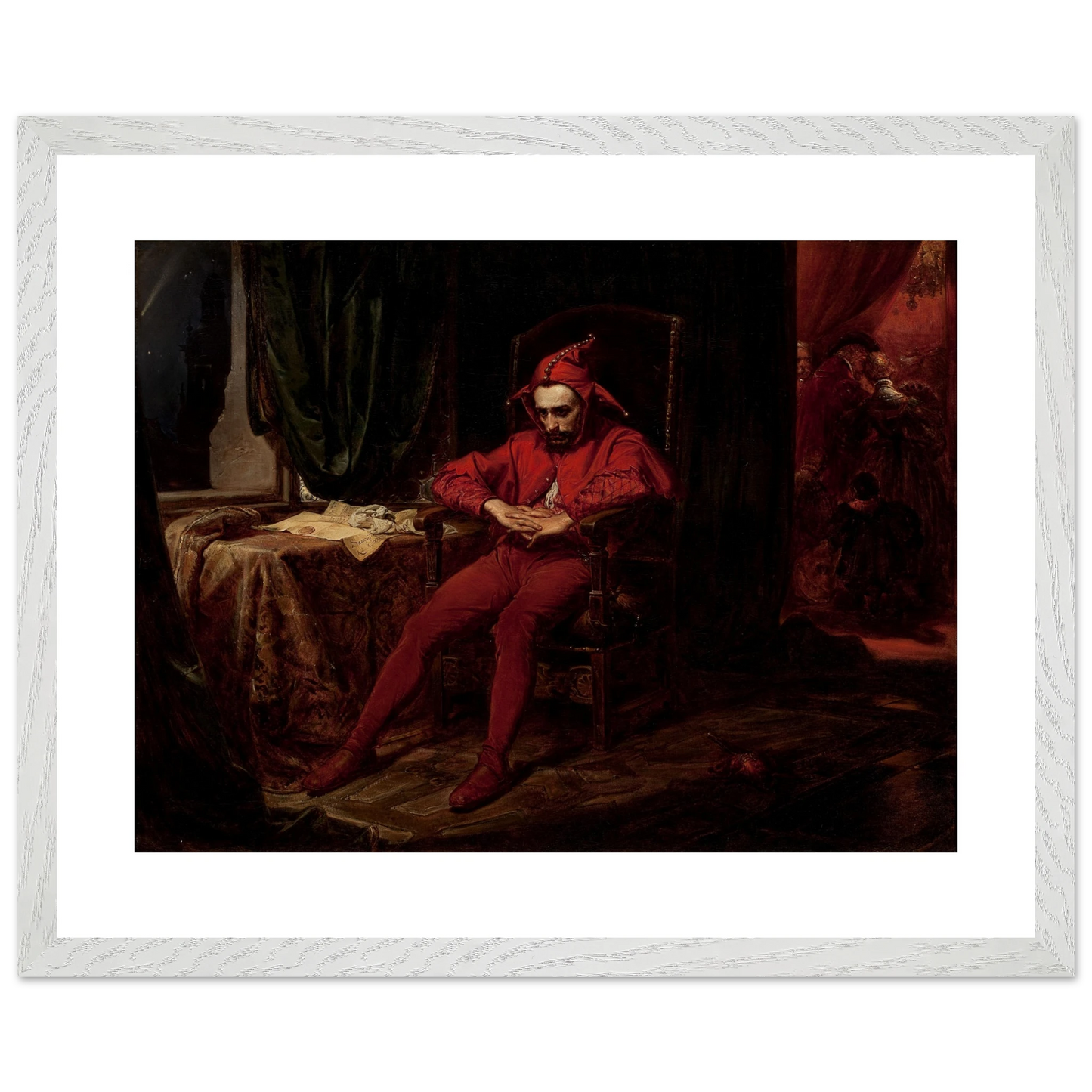



Fast, Trackable Delivery. Wherever You Are 🌍
Made & shipped from 9 global print hubs
Our smart routing system picks the closest production centre to you for speed and sustainability in UK, US, Canada, France, Germany, Netherlands, Norway, Spain, Sweden.
Quick-turn dispatch
Prints leave the studio in 1-3 business days, then typically arrive in:
UK: 3-4 days | US: 4-6 days
Canada: 5-6 days | EU: 3-5 days
Rest of world: ≈ 14 business days
Trusted carriers only
Royal Mail, DHL, UPS, FedEx, Parcelforce, PostNL, Asendia, EVRi, Posten & more—all fully trackable.



